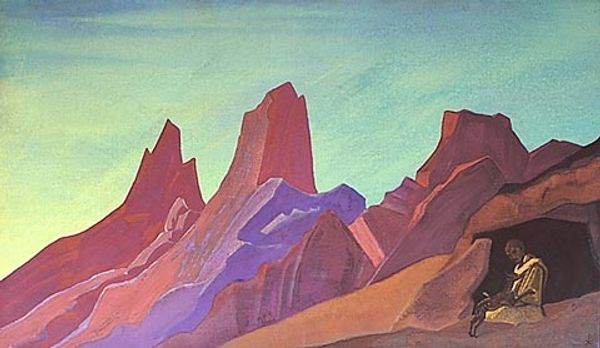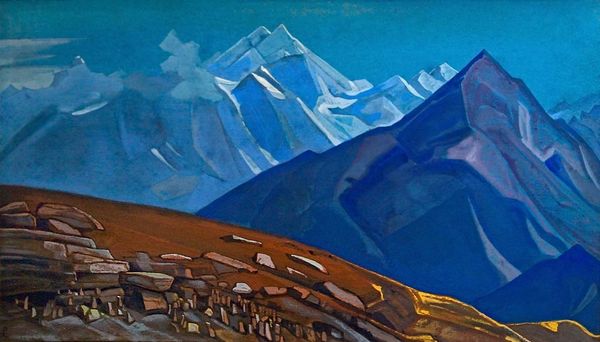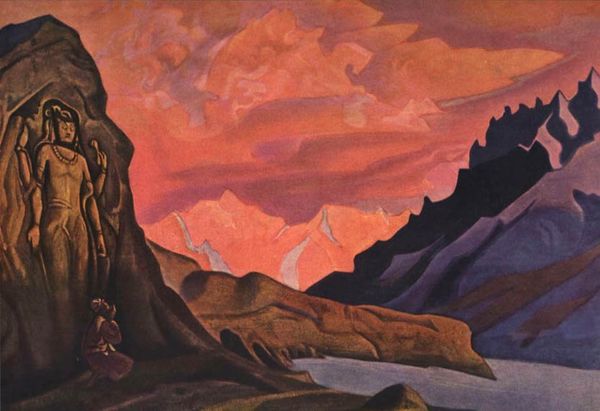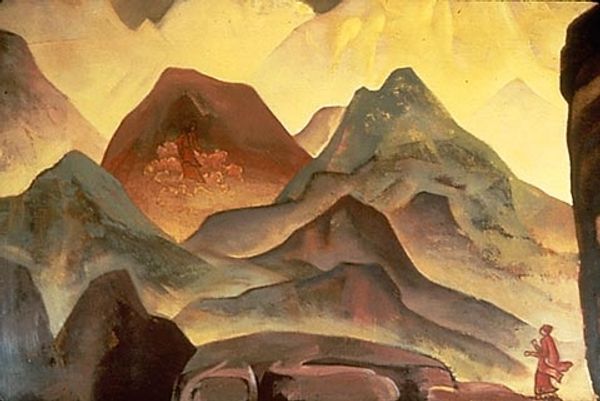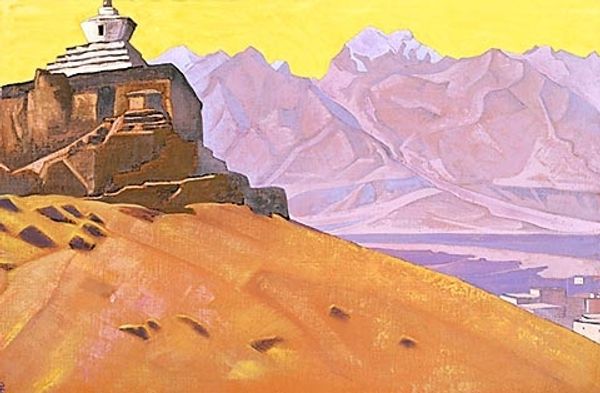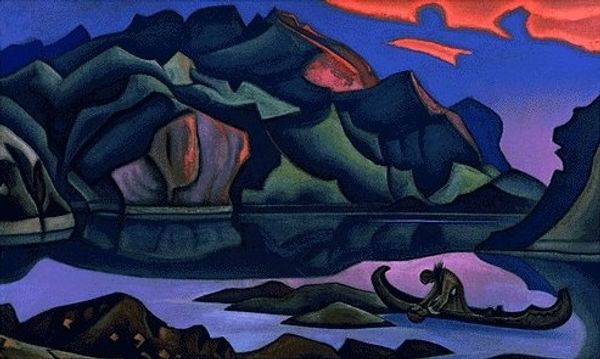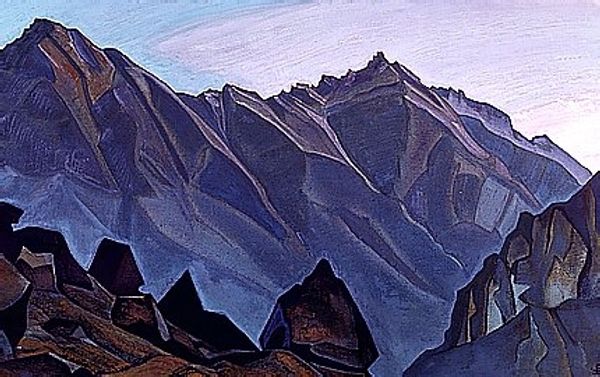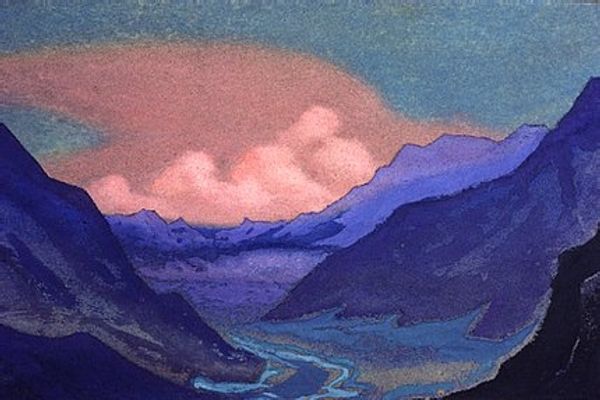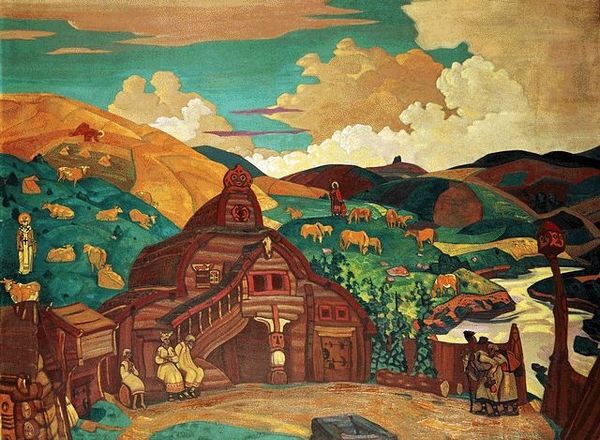
painting, oil-paint
#
painting
#
oil-paint
#
landscape
#
oil painting
#
mountain
#
expressionism
#
symbolism
#
russian-avant-garde
#
modernism
#
expressionist
Copyright: Public domain
Curator: Welcome. We are standing before Nicholas Roerich's "Wait," created in 1917 using oil paints. It is currently held in a private collection. Editor: My immediate reaction is one of stillness and anticipation. There is a real sense of quietude in the arrangement of this work, which conveys peace but also a great deal of introspection, even uncertainty. The painting strikes me as emotionally reserved. Curator: It is definitely one of Roerich's more symbolic works. His interest in Theosophy and Eastern philosophies heavily influenced his art, imbuing landscapes with spiritual meaning. Look closely at the recurring symbols that were significant to Roerich’s oeuvre—the mountains as sites of enlightenment, the solitary figures in silent contemplation, and the mystical symbols on the side of the cabin which have yet to be definitively translated, if translation is even possible. The symbolism invites viewers to explore the deeper questions of life and our relationship with the cosmos. Editor: Absolutely, and given the historical context, I wonder about the "wait" implied in the title. Painted in 1917, amid the turbulence of World War I and on the brink of the Russian Revolution, I can’t help but to read the image of those figures looking to the sky as an almost urgent visual appeal for resolution, hope, even a messiah. The composition and stylization of this work convey both vulnerability and profound tension during the dawn of what became, ultimately, a time of violent transition. What were Roerich's politics and social affiliations at this time? How do his broader political views inform your understanding? Curator: Roerich’s art in the early 20th century reveals a dedication to pacifism and an artistic dedication to international cultural preservation; he was deeply involved with efforts for cultural heritage protections, particularly through his involvement in what became the Roerich Pact, designed to provide protections to monuments during conflicts. This stance positioned him in contrast to more radically politicized artists of the Russian Avant Garde like Malevich or Tatlin, and even as separate from more overt Mystical Symbolists. While those figures explicitly pushed for total social change, Roerich maintained a commitment to humanism through global unity, cultural exchange and reverence for both tradition and the possibilities of the future. Editor: Thank you, this is really helpful context! And indeed, his devotion comes through here. Perhaps the symbolic "wait" here is not for something but also FROM something; an opportunity to take pause to reflect on shared, diverse cultures across our planet. Curator: Absolutely. A moment of stillness during tremendous upheaval. Editor: Well said. Thank you!
Comments
No comments
Be the first to comment and join the conversation on the ultimate creative platform.

